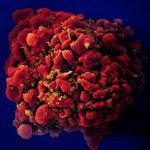Link to Pubmed [PMID] – 28253332
PLoS Pathog. 2017 Mar;13(3):e1006177
Nucleotide-binding oligomerization domain 2 (NOD2) is an intracellular pattern recognition receptor that senses bacterial peptidoglycan (PGN)-conserved motifs in cytosol and stimulates host immune response. The association of NOD2 mutations with a number of inflammatory pathologies, including Crohn disease (CD), Graft-versus-host disease (GVHD), and Blau syndrome, highlights its pivotal role in host-pathogen interactions and inflammatory response. Stimulation of NOD2 by its ligand (muramyl dipeptide) activates pro-inflammatory pathways such as nuclear factor-κB (NF-κB), mitogen-activated protein kinases (MAPKs), and Caspase-1. A loss of NOD2 function may result in a failure in the control of microbial infection, thereby initiating systemic responses and aberrant inflammation. Because the ligand of Nod2 is conserved in both gram-positive and gram-negative bacteria, NOD2 detects a wide variety of microorganisms. Furthermore, current literature evidences that NOD2 is also able to control viruses’ and parasites’ infections. In this review, we present and discuss recent developments about the role of NOD2 in shaping the gut commensal microbiota and pathogens, including bacteria, viruses, and parasites, and the mechanisms by which Nod2 mutations participate in disease occurrence.

